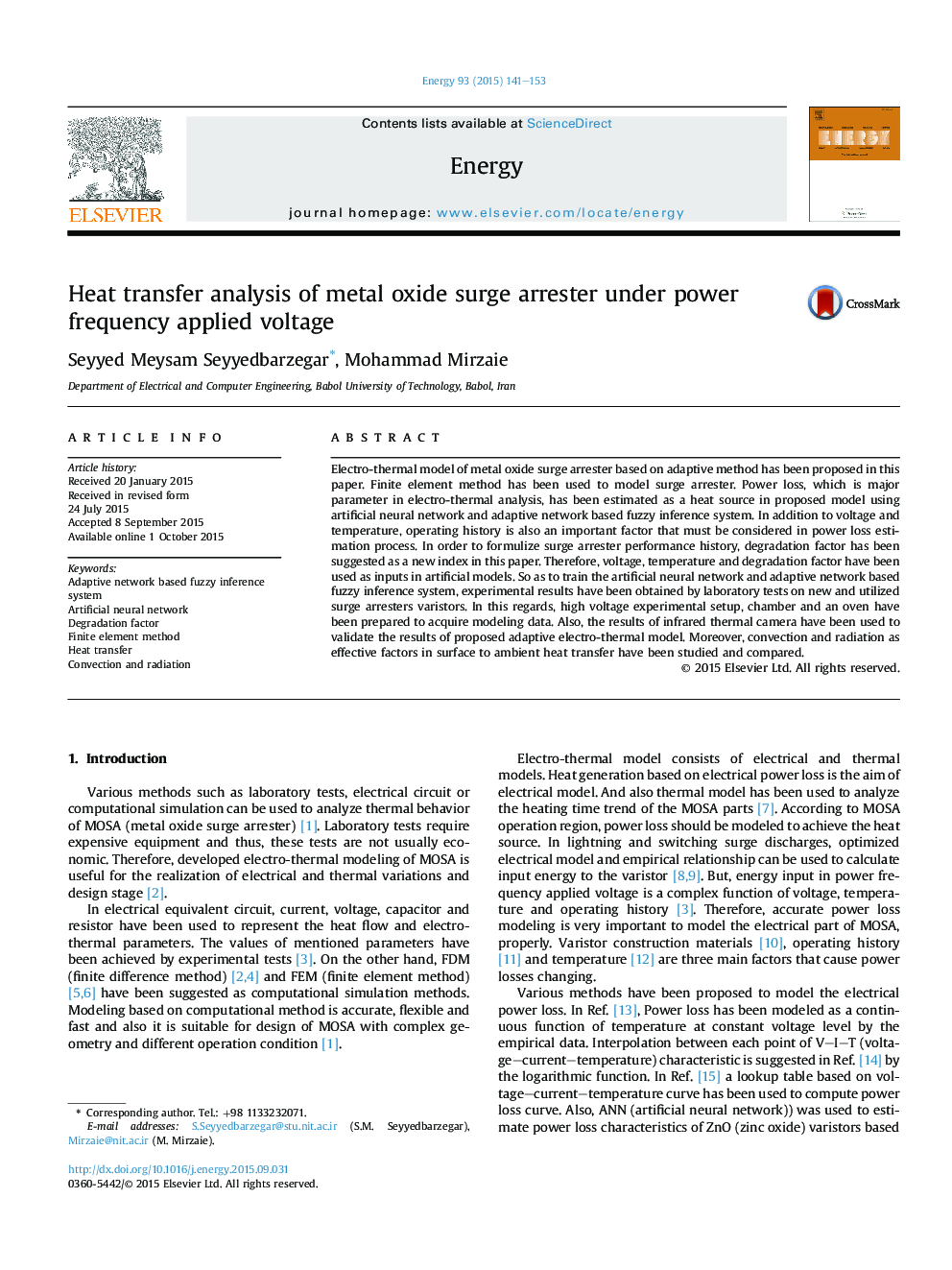| Article ID | Journal | Published Year | Pages | File Type |
|---|---|---|---|---|
| 1731078 | Energy | 2015 | 13 Pages |
•Finite element method based electro-thermal model has been proposed.•DF has been introduced as a new index to represent operating history of MOSA.•Adaptive power loss estimation method via ANFIS has been proposed.•Heat transfer phenomenon and effective factor on its have been analyzed.•Laboratory test have been performed to validate simulation results.
Electro-thermal model of metal oxide surge arrester based on adaptive method has been proposed in this paper. Finite element method has been used to model surge arrester. Power loss, which is major parameter in electro-thermal analysis, has been estimated as a heat source in proposed model using artificial neural network and adaptive network based fuzzy inference system. In addition to voltage and temperature, operating history is also an important factor that must be considered in power loss estimation process. In order to formulize surge arrester performance history, degradation factor has been suggested as a new index in this paper. Therefore, voltage, temperature and degradation factor have been used as inputs in artificial models. So as to train the artificial neural network and adaptive network based fuzzy inference system, experimental results have been obtained by laboratory tests on new and utilized surge arresters varistors. In this regards, high voltage experimental setup, chamber and an oven have been prepared to acquire modeling data. Also, the results of infrared thermal camera have been used to validate the results of proposed adaptive electro-thermal model. Moreover, convection and radiation as effective factors in surface to ambient heat transfer have been studied and compared.
